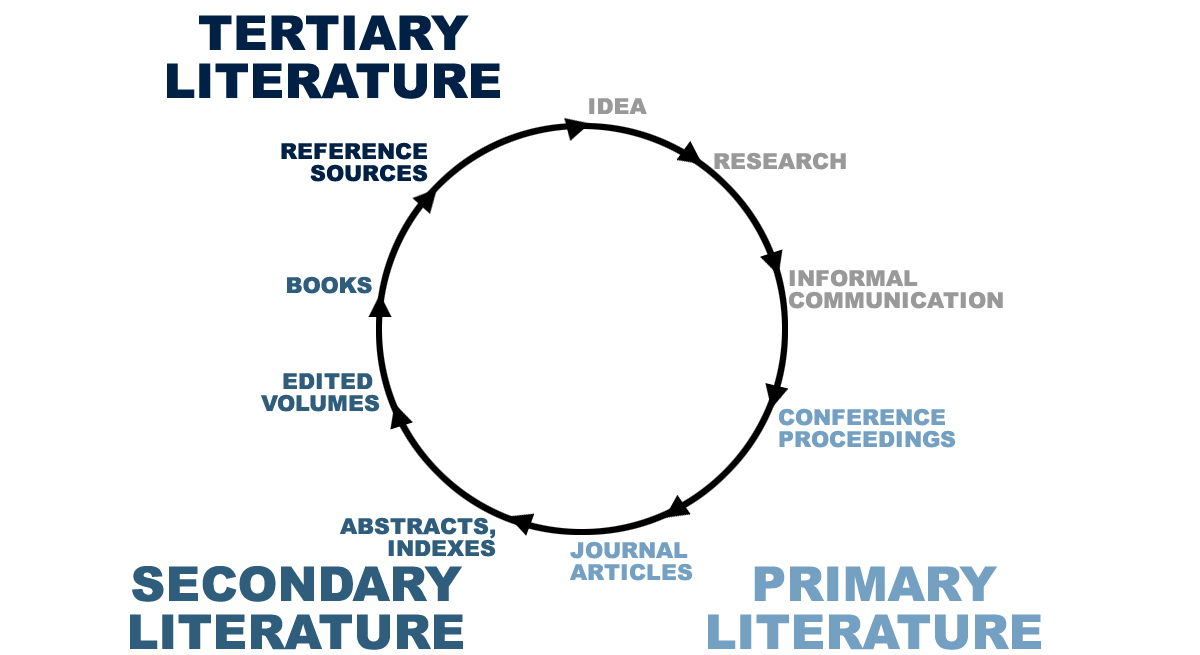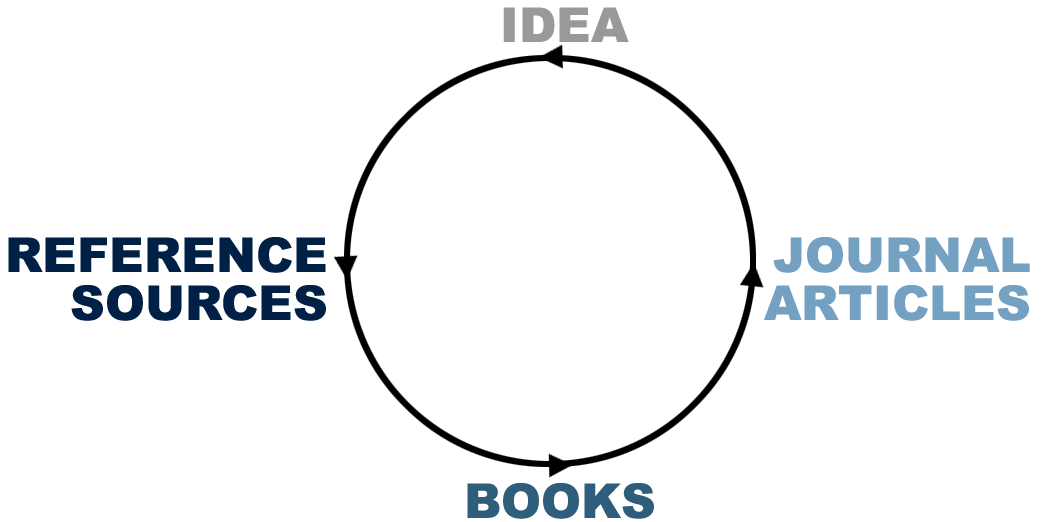Chapter 6: Finding Credible Sources
Scholarly Communication
How can I use this?
Many research projects, experiments, and findings start with informal communication between people. Understanding this communication can help you when researching the history of an idea, such as the rise in public awareness of the local food movement.
The Invisible College
Before anything is published, original research is often shared through informal communication with colleagues in order to benefit from the feedback of others in the field. This situation is often known as the invisible college and would have occurred in person or by mail, before the internet existed. Today, these methods have been joined by:
- Blogs
- Social Media such as Twitter, Discord, Reddit, and Facebook, etc.
Example
The Insulin Experiment
On October 30, 1920, Frederick Banting, a young surgeon in London, Ontario was reading an article in preparation for a lecture he was going to give the next day about carbohydrate metabolism. After reading the article, Banting had an IDEA of how the internal secretion might be isolated. He presented his idea to J.J.R. MacLeod, a physiologist at the University of Toronto, and in the spring of 1921, Banting joined MacLeod’s lab and began research with the help of a fourth year student, Charles Best.
Over the summer and fall of 1921, Banting and Best conducted experiments to isolate the internal secretion from animal pancreas. By administering the extract to diabetic dogs, they had some success at lowering blood sugar levels and keeping the dogs alive. In December, they were joined by J.B. Collip, a biochemist from the University of Alberta, who was better able to purify the extract. In January 1922, they successfully administered Collip’s precipitate to a 14-year-old patient at Toronto General Hospital.
The story of the discovery of insulin is fascinating, and you can read more about it in The Discovery of Insulin (Bliss 1982)[1].
Cycle of Scholarly Communication
In order to find information, it helps to understand how information is created and published in the first place. While we go through each component of the scholarly communication cycle, we’ll examine it through the lens of the discovery of insulin as a treatment for diabetes, a crucial scientific discovery which was discovered and communicated using every part of the cycle.
Scholarly communication is often discussed in terms of a cycle because reading about a subject area might spark a new idea in the mind of the reader, thus beginning the cycle all over again. Here you can see the cycle of scholarly communication, and it is easy to imagine how ideas are built upon one another.
 Generally, when you are seeking information, especially on an unfamiliar topic, it is often effective to move counter-clockwise around the cycle of scholarly communication.
Generally, when you are seeking information, especially on an unfamiliar topic, it is often effective to move counter-clockwise around the cycle of scholarly communication.
- Begin with reference sources that provide an introduction to a topic.
- Next look for books that provide you with more descriptive information and a holistic view of the topic.
- Finally, search for journal articles for a more current perspective or to examine the original research that was published.
Example
The Story of Insulin
Michael Bliss (1982) says in his book, “Insulin had not emerged out of a vacuum.”[1] A half-century of research by scientists around the world had laid the foundation for the discovery of insulin by Banting and Best at the University of Toronto.
By 1920, researchers had established that diabetes mellitus involves the body’s inability to metabolize food, especially carbohydrates, and that it is the pancreas that is responsible for this metabolism. Many scientists speculated that it was an internal secretion produced by the islets of Langerhans in the pancreas that held the key to carbohydrate metabolism. So far, experiments to isolate the internal secretion and use it to treat diabetic patients had failed.
Adaptations
Material in this section has been adapted from Library Research Skills for Land and Food Systems by Katherine Miller, Sally Taylor, Katherine Kalsbeek, Suzan Zagar, Megan Brown, Maggie Fabber, licensed under a Creative Commons Attribution-ShareAlike 4.0 International License.
References
Bliss, M. (1982). The discovery of insulin. McClelland and Stewart, Toronto, Ont.
Media Attributions
- information source cycle © UBC Library is licensed under a CC BY (Attribution) license
- FindingInformationSequence © UBC Library is licensed under a CC BY (Attribution) license
The different parts or sections of an argument.
Something that is academic in nature.


